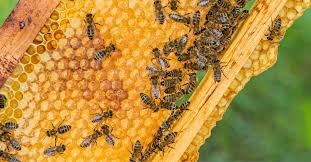Table of Contents
Pesticides and Agricultural Chemicals
Pesticides, including neonicotinoids and herbicides like dicamba, pose direct and indirect threats to bees. They impair navigation, weaken immune systems, and reduce foraging efficiency, while herbicide drift destroys wildflowers critical for nutrition 313. Fungicides, once considered safe, now disrupt bee gut microbiomes and metabolic functions, exacerbating colony stress 6. In the U.S., toxic pesticide exposure in pollen has surged, particularly in regions dominated by monocrops like soybeans and almonds 13.
2. Parasites and Pathogens
The Varroa destructor mite is the most destructive parasite, spreading viruses (e.g., deformed wing virus) and weakening colonies globally 46. Invasive species like the Tropilaelaps mite in Asia and the small hive beetle further threaten hive health 612. Fungal infections like Nosema ceranae and bacterial diseases such as American foulbrood compound mortality rates, especially in managed colonies 46.
3. Habitat Loss and Forage Scarcity
Intensive agriculture and urbanization reduce floral diversity, leaving bees reliant on monocrop nectar (e.g., soybean or almond blossoms), which lacks nutritional variety 213. Climate change shifts blooming periods, causing mismatches between forage availability and colony needs 12. In the U.S. Midwest, herbicide use has turned landscapes into “nectar deserts,” forcing beekeepers to relocate 13.
4. Climate Change
Extreme weather—droughts, floods, and unseasonal temperatures—disrupts foraging and brood cycles. Warmer winters reduce winter bee survival by altering colony dynamics, while heat stress lowers nectar production in plants like oilseed rape 1213. Climate shifts also facilitate the spread of invasive species (e.g., Asian hornets in Europe) and pathogens 612.
5. Economic Pressures and Market Dynamics
Declining honey yields (down 14% per colony in the U.S. since 2015) and competition from fraudulent honey imports undercut profitability, pushing beekeepers to rely on pollination contracts (e.g., almond orchards) 1113. However, pollination services expose bees to pesticides and stress, increasing mortality 13. In Hungary, falling honey prices and rising costs threaten small-scale beekeepers’ viability 2.
6. Management Challenges and Beekeeper Adaptation
Beekeepers face difficulties in maintaining queen quality and genetic diversity, which are critical for colony resilience 46. Poorly adapted stock (e.g., commercial queens from warmer regions) struggles in local climates 12. Additionally, Varroa resistance to miticides and the need for frequent hive monitoring strain resources, especially for small-scale operators 48. Education on sustainable practices, like planting native flora or cold-storing colonies, is increasingly vital 1213.
Here are ten frequently asked questions (FAQs) related to the 6 key factors affecting beekeepers globally:
Frequently Asked Questions (FAQs)
on the 6 Key Factors Affecting Beekeepers Globally
- What are the six key factors that affect beekeepers worldwide?
The six main factors include climate change, pesticide use, habitat loss, pests and diseases, poor beekeeping practices, and market/economic challenges. - How does climate change impact beekeeping?
Climate change disrupts flowering cycles, reduces forage availability, and causes extreme weather that harms bee colonies and affects honey production. - Which pesticides are most harmful to bees, and why?
Neonicotinoids and other systemic pesticides are especially harmful because they affect bees’ nervous systems, impairing their ability to forage, navigate, and reproduce. - Why is habitat loss such a big issue for bees and beekeepers?
Loss of wildflower meadows, hedgerows, and forest areas reduces bees’ natural food sources and nesting sites, forcing them to depend on fewer and often nutritionally poor plants. - What are the most common pests and diseases affecting bees?
The Varroa mite, Nosema fungus, and viruses like Deformed Wing Virus (DWV) are major threats that weaken colonies and contribute to colony collapse. - How can poor beekeeping practices contribute to bee population decline?
Mismanagement of hives, overharvesting of honey, poor nutrition, and inadequate pest control can stress colonies and make them more vulnerable to other threats. - In what ways do economic and market challenges affect beekeepers?
Beekeepers face unstable honey prices, competition from adulterated or imported honey, and limited access to markets, making it hard to sustain operations. - What can beekeepers do to adapt to these global challenges?
They can diversify forage, monitor hive health regularly, use integrated pest management (IPM), adopt sustainable practices, and engage in community or cooperative networks. - Are these factors equally impactful in all regions of the world?
No, the impact varies. For example, Varroa mites are more problematic in temperate regions, while climate-related droughts may hit tropical areas harder. - What role can governments and the public play in supporting beekeeping?
Governments can regulate pesticide use, support research and training, and fund pollinator-friendly programs. The public can help by planting bee-friendly gardens and buying local honey.

